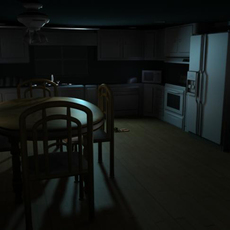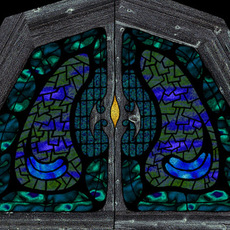H3D Tutorials
Popular Tutorials
Tutorials
-
Exporting a Model with Textures and Materials This article illustrates the Maya To XAML plug-in, emphasing successful export of model data with textures. Please note that the plug-in is still in the development beta and still requires a small amount of cleanup before you have the ability to exp...
-
Rigging For Bipeds by Paul Neale Intro This isn't a beginner tutorial, but I expect that you will still get something out of it if you are. I expect that you have a working knowledge of Max 4, 5 or 6 as this is the tool that I will be using, and have done the tutorials...
-
Conversational MEL Part 1 www.NimbleStudiosInc.com info@NimbleStudiosInc.com Topics Covered: MEL commands, flags, and argument; Maya scripting UI; Sample Script: A window to hold common tasks This is the first of several tutorials on MEL. We�ll be starting from the very be...
-
Conversational MEL Part 2 www.NimbleStudiosInc.com info@NimbleStudiosInc.com Topics Covered: variables; arrays; assignment; return values; basic loop; Sample Script: Node name search and replace Introduction When we left off, we�d combined a pinch of cut-and-paste with a dash o...
-
Particle Replacement of Geometry Script a script designed to implement NPR techniques in Maya The Idea The original idea came from looking at Barbara Meier's Painterly Rendered techniques and her Haystack images. Her technique was to use particles to represent the geometry ...
-
Tutorial: Using Maya's 'Pick Walk' Functionality It sometimes surprises people that Maya uses the left/right keys to change the current selection instead of stepping back and forth in time. With the default key mappings 1, the up/down/left/right arrow keys are used to change the selection w...
-
Run Cycle Autor: Rodri Torres | Date: Agosto 2.005 | Translation: Francesco Campobasso | Revision: 0.4 This document explains how to create a run cycle working with curves. This workflow can be used in any 3D software able to work with animation curves. The axes mentioned in this docum...
-
The STMap is a pretty simple but powerful node. For each pixel in the output image it looks at the corresponding pixel of the stmap and uses it's red and green values as x/y coordinates respectively to pull the right pixel from the source image. Given that your 3D renderer can output texture UVs ...
-
Tutorial: The Unix Shell for VFX Arteeests If you're using a Unix based operating system such as Linux then you're going to need to know your way around a unix shell. The shell is where you manage your files, and run utilities and applications. As an artist you may think you don't ne...
-
Here is a scribble for some camera trigonometry. couldn't attach it to a post in the forum so I'll just park it here and link to it. Keep in mind that if you have an image / image sequence that corresponds to the camera (i.e. match move), then the horizontal aperture and vertical aperture need to...
-
A commonly needed effect is the emission of particles at the exact location of object collision. For example, as a sword scrapes along a wall we may need sparks; As a boulder rolls down a mountainside we may need smaller instanced rocks and pebbles to appear; As a character walks along a dirtroad...
-
It is relatively easy to animate a line of written text, but it can be tricky to exactly track the pencil point to the line as it writes without resorting to lots of keyframes. The following technique allows the pencil to automatically lock to the end of the emerging paint effects line. ...
-
phoneChord.avi Scene File: phoneChord.zip This file shows a simple and fast method for creating a dynamic phone cord using Maya Hair. 1. Model the phone and receiver and a curve that defines the start position of the cord. The cvs on the cord should be evenly spaced and the first cv...
-
First, go to your modelling toolset, polygons>tool options> and make sure keep faces together is checked. Also you will be needing an HDRI map for this tutorial, please e-mail me at bartonix@gmail.com and state in the subject of the e-mail APT_PROBE.HDR so I know which hdri map you're needi...
-
This is a basic modelling tutorial that will teach you how to make a screw-driver and render it with FG (Final Gather) With global illumination, HDRI (High dynamic ranged imagery) And DoF (Depth of field, optional). Let us begin shall we, open Maya, and go to the modelling section. Now cr...
-
Faking Global Illumination with point lights This handout will explain how to use point lights to light a scene and give it the same look as using global illumination. The overall quality is similar, it is easier to do, and best of all, it renders faster. I used a night time kitchen scene fr...
-
This tutorial will walk you through the steps to create offset surfaces of your model using the extrude tool and use those surfaces to model clothing for your characters. This method can also be used for other purposes. this tutorial might come in handy with you if you use hexagon or any app th...
-
1. Turn on Raytracing (go to the Render Global window either from the Render View portal or under Window-> render globals) 1a. If you have objects in your scene that you'd like to be reflective you must set the Ray Tracing Reflections option to at least "2) 2. Create a scene to v...
-
A common question when new to texture mapping, is what resolution should textures be? This is assuming that you are going to be making your own in a 2D package, such as Photoshop, either from scratch or from a scan. Well, the first thing to do is ignore dpi settings. All you care about is the pix...
-
There are situations where a phenomenon's velocity or speed is related to it's behavior or appearance. Perhaps the incandecence increases as a particle moves faster... or the color changes from blue to red. Perhaps some dust is resting on an object, but once it gets blown away it also begins...
-
Continuity applies to both curves and surfaces. It simply refers to how two curves meet at a point, or how surfaces meet at an edge. When using a patch-modeling approach, where a character, vehicle or whatever are modeled from a series of patches, like a quilt, one wants to avoid visible seams be...
-
When using the curve operations in the animation menu (Predefined/...) or in the curve editor, an expression is applied to the existing keyframe animation in a non destructive way. I.e.: "Predefined/Negate" simply turns "curve" into "-curve" where 'curve' holds the keyframe information. To clear...
-
Here's a common problem... you add fog to a spotlight, render an image and... no fog. The problem is simple and is inherit to how Maya calculates lightfog. Above we see a simple scene with a single spotlight. No fog added yet. The thing to notice is how once fog has been added to the ...
-
Some of you know about Fog and use it to blend your scenes and help with depth effects. Few of you will know about the GDI and GSI slots in the lighting menu. Both can be used to greatly enhance lighting effects and can be used for more dramatic effects. The possibilities are endless. I decided t...
-
In the last 10 years or so we�ve seen lots of video games released that use low poly count models for the game play and then tell the story using pre-rendered cinematic sequences. The characters in the cinematics always look really nice with lots of detail and realism, but as soon as the game pla...































